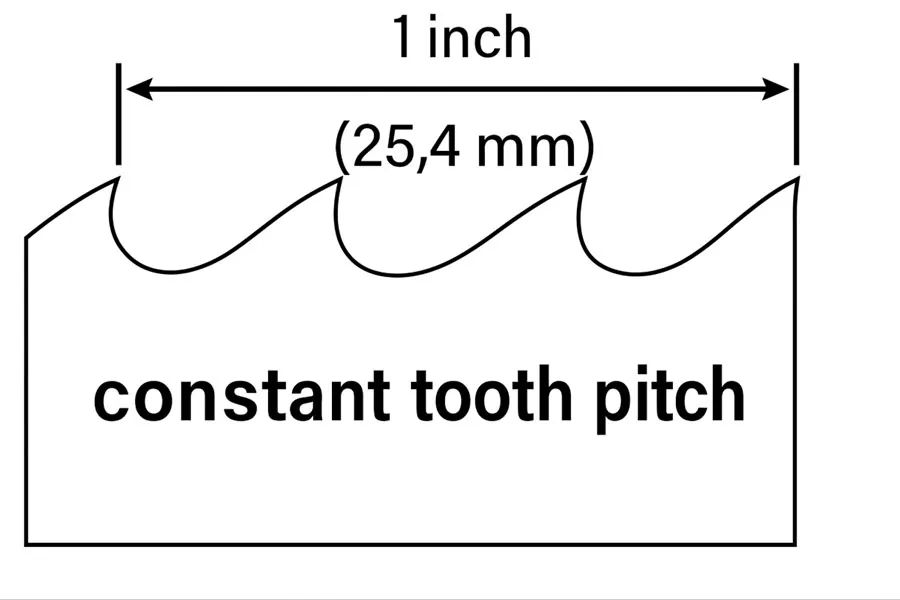Definition of Constant Tooth Pitch
Constant tooth pitch refers to a band saw blade tooth configuration where the distance between adjacent teeth, or tooth pitch, remains uniform along the entire length of the blade. Constant pitch blades are suitable for cutting materials with uniform hardness and thickness, as they provide consistent cutting performance and chip removal. However, they may not be as versatile as variable pitch blades, which can better accommodate varying material properties and cutting applications. Engineers value its predictable cutting forces and uniform chip load. Buyers look for machines with robust slab milling features to boost throughput, lower cycle time, and ensure consistent surface quality.
Why It Matters for Band Saw and Mill Drill Machines
When you run a constant tooth pitch blade, you benefit from even chip removal. Steady tooth spacing yields uniform chip thickness, which helps you maintain a constant feed rate without sudden spikes in load. That consistency reduces vibration, extends blade and machine life, and simplifies machine setup.
You also get reliable surface finish and dimensional accuracy. With every tooth cutting the same amount, you avoid uneven wear patterns and irregular finishes. For production shops with high repeat volumes or simple parts, constant pitch tools deliver predictable results and lower scrap rates.
Related Terms
Variable PitchHook Tooth
Skip Tooth
Raker Tooth
Tooth Pitch
Chip Load
FAQ
In which applications is constant tooth pitch preferred?
You’d choose constant tooth pitch for simple, straight-line cuts and when material hardness is uniform. It’s common in wood cutting, non-ferrous metals, and basic steel sections. In mill drilling, constant pitch end mills excel at slotting and shallow face milling where repeatable chip load and surface finish consistency matter. If you run batch parts of the same geometry and material, constant pitch lets you dial in a single feed rate and expect identical results every run.
How does constant tooth pitch affect cut quality and surface finish?
With constant tooth pitch, each tooth removes the same chip thickness, so you get a consistent feed per tooth. That yields uniform cutting forces and minimal tool deflection. The result is an even surface finish without ridges or burn marks. You also reduce the risk of one tooth doing extra work and wearing prematurely. This steadiness translates into smoother surfaces and fewer secondary finishing operations, which saves you time and reduces operating costs.
Are there any drawbacks to using constant tooth pitch tools?
Constant tooth pitch tools can amplify machine-induced vibrations or resonance, especially in rigid or hard materials. You might see chatter marks if the natural frequency aligns with your spindle speed and feed. Variable pitch tools can mitigate that. Also, constant pitch may not adapt well to mixed-material cuts or complex contours. If you need to reduce noise and vibration in those cases, consider a variable pitch or mixed geometry cutter instead.



